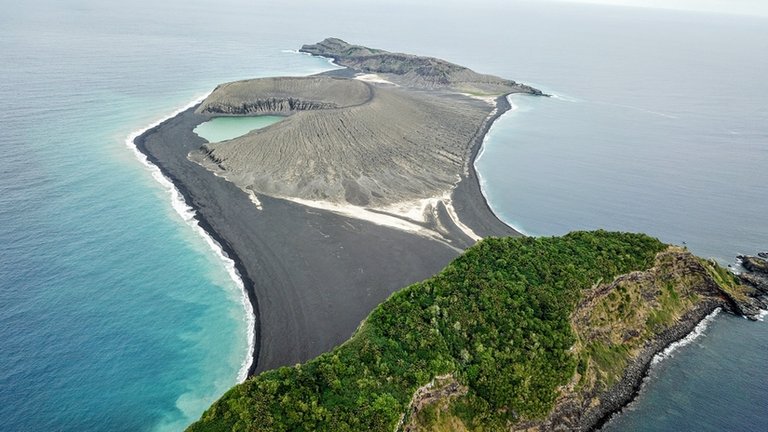Scientists at the US National Aviation and Space Office (NASA) have landed for the first time on one of the world's newest islands. They found that its surface, which had risen over the sea three years ago, is now covered with sticky, mysterious mud, but also populated with vegetation and birds.

The new volcanic island emerged in the ocean near the Tonga archipelago three years ago. It is one of only three islands that have emerged over the past 150 years and have survived for more than a few months. Dan Slayback of NASA's Goddard Space Flight Center has been extremely eager to visit this remote location, as scientists have so far only some information about how and why new islands are created. NASA team first tracked the island using satellite imagery and set off for the first time in October last year. Now Slayback described what they found on the NASA blog. The island emerged from volcanic activity from the edge of an underwater volcanic crater in early 2015. It remains unnamed yet, although it is sometimes referred to as Hung Tonga-Hung Ha'apai, which is the name of the surrounding islands. Slayback and his team landed on an area that looked like a black sand beach on satellite imagery. In fact, it was a pea-sized gravel that made walking difficult. They found the first plants on the island that seemed to have taken place after their seeds had been fed by birds flying over the island. A barn owl and hundreds of black-backed fishermen also nestled there. But what Slaybacka and his team are constantly meting, is the light, sticky, clay-like mud covered by the island. So far, they have no idea what exactly it is, how it originated and where it came from. "Light-colored material can be seen on satellite images," Slayback said. “It's a light-colored mud that is very sticky. But even though we saw it with our own eyes, we still do not know what it is and we do not know where it comes from. Because it's not ashes. ”During his visit to the island, he took rock samples for analysis. He also placed a high-precision GPS station and a drone on it to explore the shape of the island and find out more about this uninhabited new territory.
My publish0x blog: https://www.publish0x.com/free-life
https://www.publish0x.com?a=4openBpe7A

Interesting stuff to read. Keep it up.